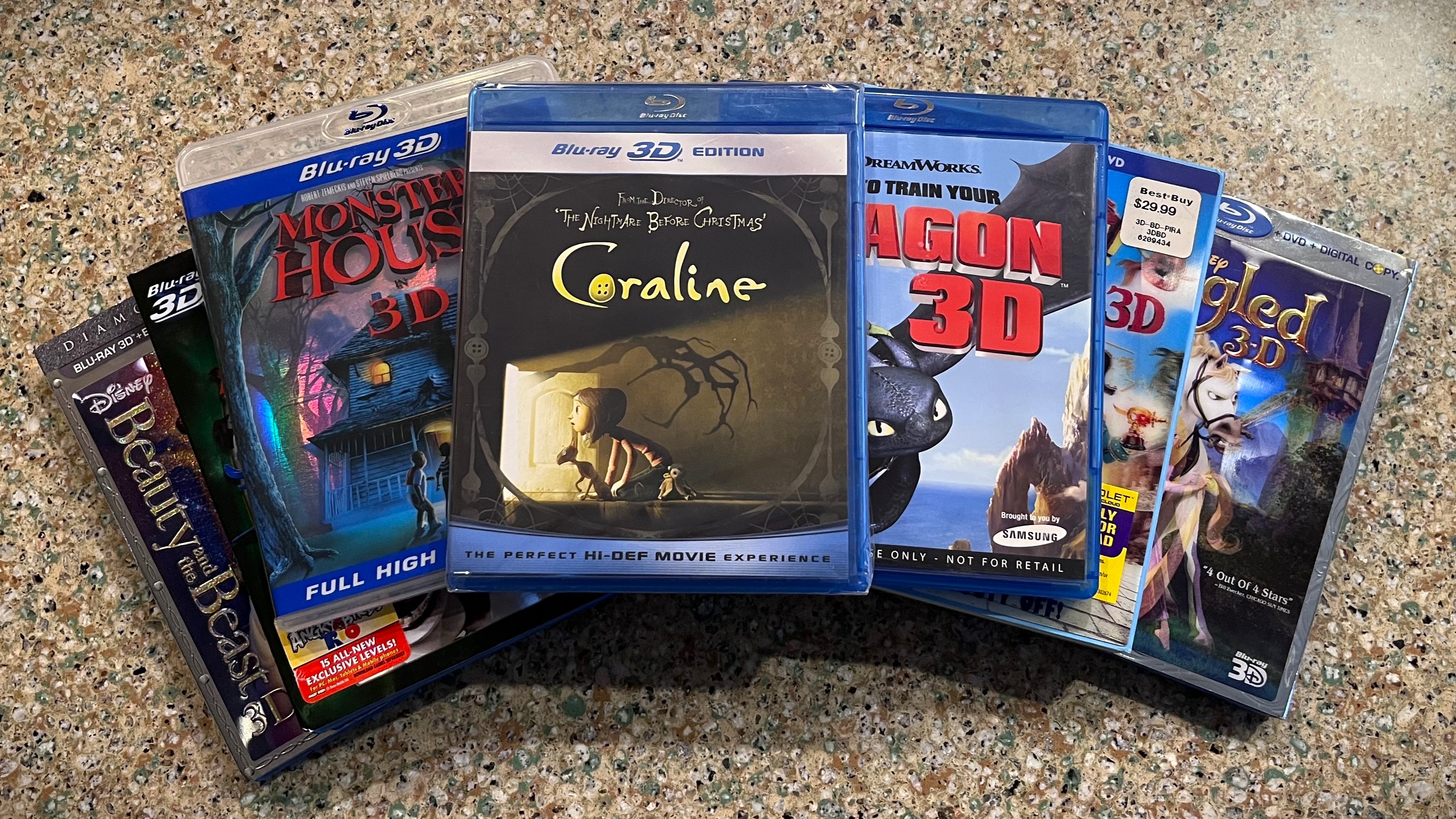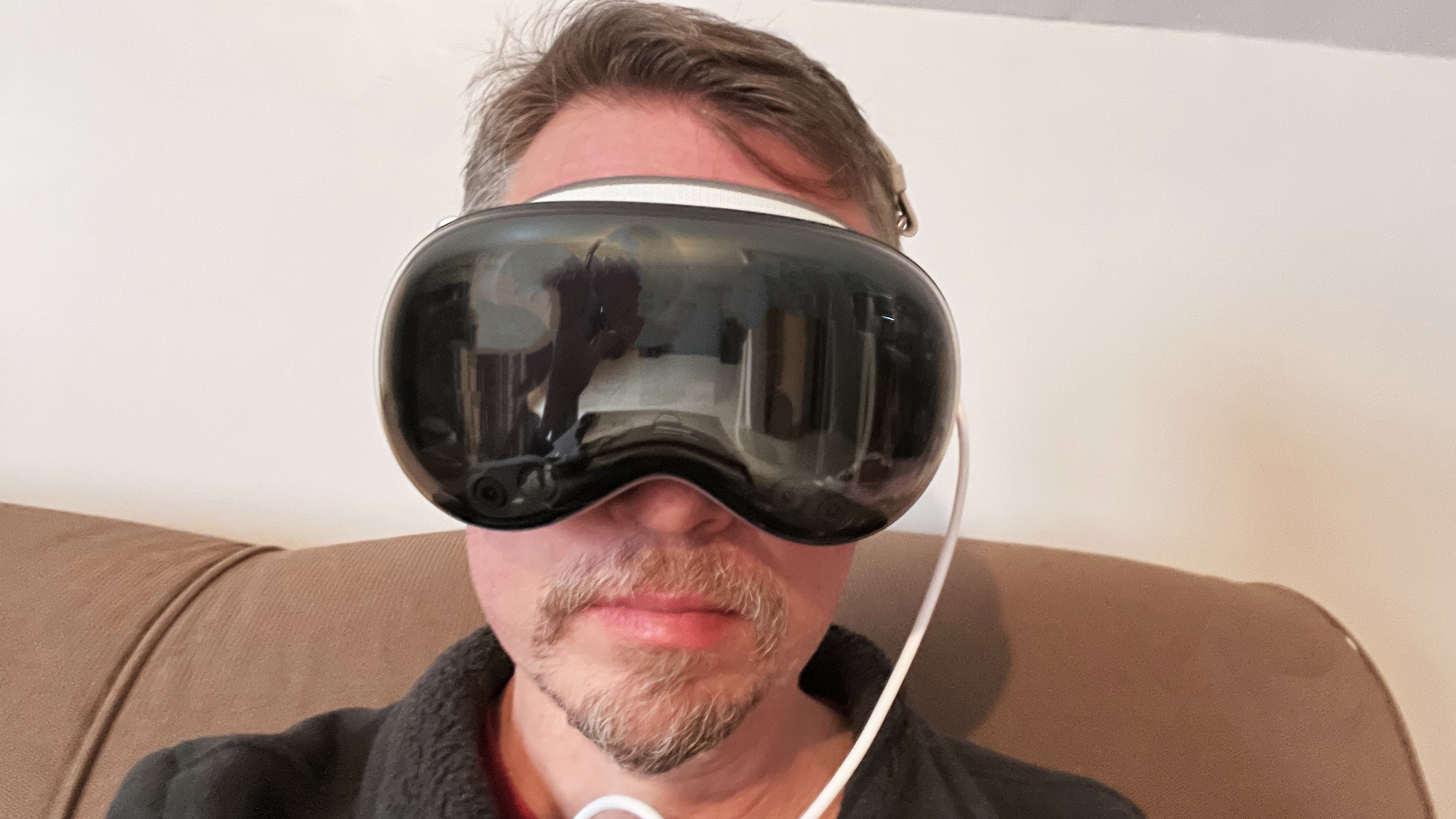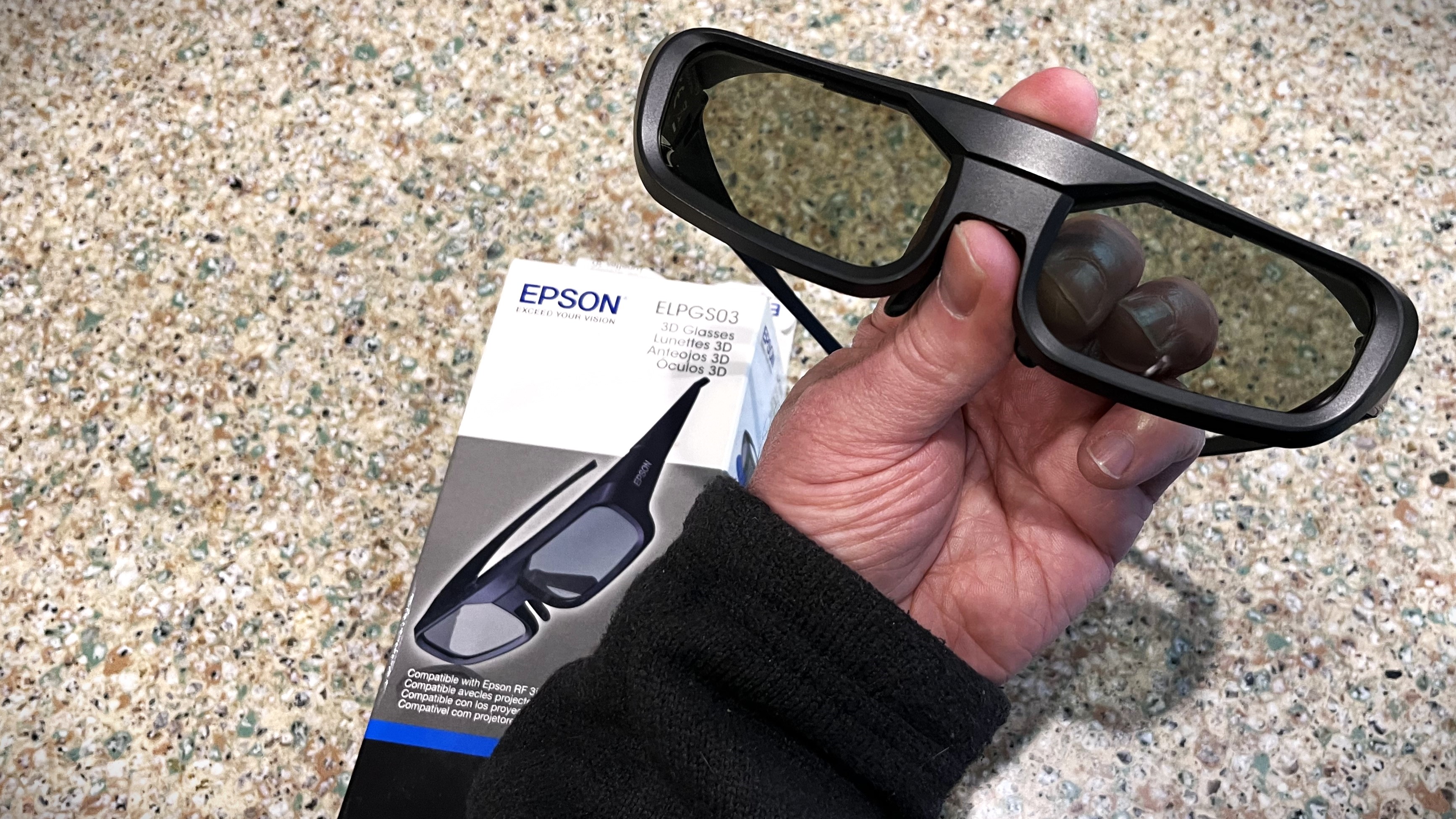I watched Avatar on the Apple Vision Pro and this is how you do 3D movies at home
I’m ready to trade in my TV

The most recent chapter in our collective love affair with 3D movies came and went quickly, with set manufacturers scrambling to add the feature to the best TVs around 2010, and then retreating completely from 3D support soon after. In a few short years, it was over. During that era, I amassed a sizeable collection of Blu-ray 3D discs, and they now sit filed away in a remote corner of my media cabinet, a reminder of that time and a potent source of nostalgia.
It may have disappeared from TVs, but 3D never really went away. Movies on Blu-ray 3D continue to trickle out, though if you want to view them in that format you need to watch them on the best 4K projectors, some of which still support 3D. You can also catch movies in theaters in 3D, with the most recent blockbuster showcase for the format being the Avatar sequel, Avatar: The Way of Water.
Now, there's another way to watch movies in 3D at home: the Apple Vision Pro mixed reality headset. Movies in 3D can be purchased on the Vision Pro’s Apple TV app, and an extensive collection of titles are available to stream on its Disney Plus app. Three titles – these are Avatar, Avatar: The Way of Water, and Titanic – are also available in those apps in a “motion-graded” High Frame Rate (HFR) format, which is how they were shown in Imax theaters – The Way of Water on its initial release, and Avatar and Titanic in re-release.
Pixelworks, the company behind the TrueCut motion grading technology used for the post-production of all three movies, recently lent me a headset so I could check out motion-graded 3D on the Apple Vision Pro, which is currently the only source for home 3D movie releases other than Blu-ray disc. It was a treat to spend time with Apple’s pricey, elaborate mixed reality headset, which you can read all about in our Apple Vision Pro review. Playing movies in 3D format is just one of the many things the Apple Vision Pro can do, and it does it exceptionally well.

Looking back on 3D TVs
Having spent many hours watching 3D movies with my kids during the 3D TV heyday – plenty of the releases were animated ones, and they were at the prime age to enjoy them – I’m well aware of what good – and mediocre – 3D looks like. Perhaps the best example of 3D animation I know of is Coraline, based on the book by Neil Gaiman and directed by Henry Selick (Coraline, incidentally, is getting a 3D theatrical re-release in summer 2024 to celebrate its 15th birthday). That disc got plenty of play in my house, and it’s one I would regularly use to test 3D TVs.
Another successful example of 3D cinema is the original Avatar, which looked fantastic in theaters and on Blu-ray. Aside from watching Martin Scorcese’s Hugo, another 3D triumph, it would be 13 years before I found myself absorbed by a 3D movie, and that was when I watched Avatar: The Way of Water at an IMAX theater. But in the case of Avatar: The Way of Water, 3D was only one thing that made the experience impressive. Another, equally important, one was its motion-graded Cinematic HFR presentation.
TrueCut Motion: how it works
Unlike typical movies shown with a 24 frames-per-second (fps) frame rate, movies motion-graded using Pixelworks’ technology display at a higher, 48 fps rate. HFR’s main benefit is it eliminates the judder and blur artifacts accompanying fast-motion scenes captured at 24 fps. But boosting the frame rate to 48fps can also give movies an overly fluid and unnatural look, especially in quiet scenes with no action.
Sign up for breaking news, reviews, opinion, top tech deals, and more.
With TrueCut motion grading, the filmmaker can selectively vary frame rates on a scene-by-scene basis in post-production, using a higher rate for fast-action scenes, and a standard 24 fps rate for more typical ones. This process will give viewers the best of both worlds: crisp, blur- and judder-free images in shots with action, and a natural sense of motion when the action slows down.

Enter the virtual theater
To compare motion-graded and non-motion-graded movies on the Apple Vision Pro, I first watched a downloaded version of No Time to Die, the most recent entry in the James Bond film franchise. No Time to Die is a movie with action scenes galore, and it’s one I’ve used many times to evaluate a TV’s motion handling. So, why not also on Apple’s mixed-reality headset?
Watching a scene where the camera pans slowly across a cemetery on a rough, hilly landscape, the image showed plenty of motion blur and a significant loss of detail. In a subsequent scene where Bond and Madeline race in a car through city streets with assassins in hot pursuit, buildings in the background also had a blurred quality that made the image look overly soft.
It would have been an ideal comparison if a motion-graded version of No Time to Die were available (it’s not), but I instead had to make do with watching a download of the motion-graded version of the original Avatar.
Same as when I watched it in a theater, and on 3D TVs back in the day, Avatar on the Apple Vision Pro had excellent 3D depth, and I was easily immersed in its 3D world. TrueCut motion grading made the film’s almost non-stop action scenes look consistently crisp, with the Na’vi and the creatures they rode upon and the intricately rendered jungle backgrounds looking equally solid and detailed. I also didn’t feel the action was happening unnaturally fast, which would have quickly whisked me out of the 3D world.
Checking out other 3D movies in the Disney Plus app, Avatar: The Way of Water was a highlight, with eye-popping 3D effects and fantastic picture contrast made possible by the Apple Vision Pro’s powerfully bright display. It looked better than I remembered from my theater experience, though the motion wasn’t as consistently natural across scenes as in the re-mastered Avatar.

The new 3D – same as the old, but with a twist
I may harbor nostalgia for 3D movies, but I can’t say I’ve missed them terribly since the last 3D boom fizzled out. Avatar: The Way of Water was a welcome throwback, but one 3D blockbuster doesn’t equal a 3D revival.
Fortunately for movie fans, motion-graded Cinematic HFR is catching on. Following Avatar, its sequel, and Titanic being shown in theaters in the format, Argylle and Kung Fu Panda 4 from DreamWorks Animation have been released in Cinematic HFR. That indicates steady progress for the format, especially since both Argylle and Kung Fu Panda 4 are from studios other than Disney.
I’ve had fun watching 3D movies on the Apple Vision Pro, though there admittedly is something a bit alienating about sitting in a chair wearing a headset for extended periods. But then again, 3D movies have always involved wearing some form of awkward eyewear that removed you from everyday existence, and maybe that’s their ultimate appeal.
You might also like
- You’ll need an Apple Vision Pro to watch Avatar 2 as James Cameron intended
- Apple Vision Pro’s new 3D IMAX movies show it could succeed where 3D TVs failed
- Avatar is being remastered in high frame rate – but your current 4K TV can’t handle it

Al Griffin has been writing about and reviewing A/V tech since the days LaserDiscs roamed the earth, and was previously the editor of Sound & Vision magazine.
When not reviewing the latest and greatest gear or watching movies at home, he can usually be found out and about on a bike.